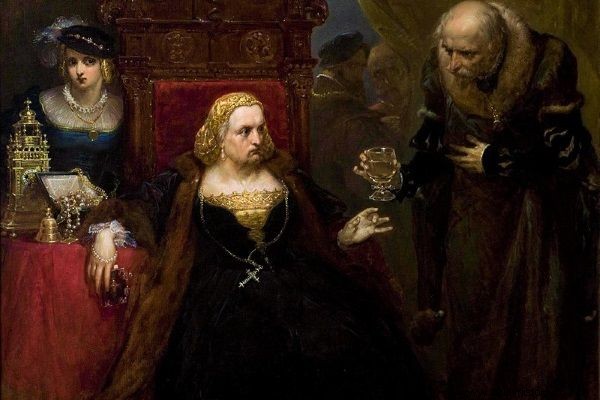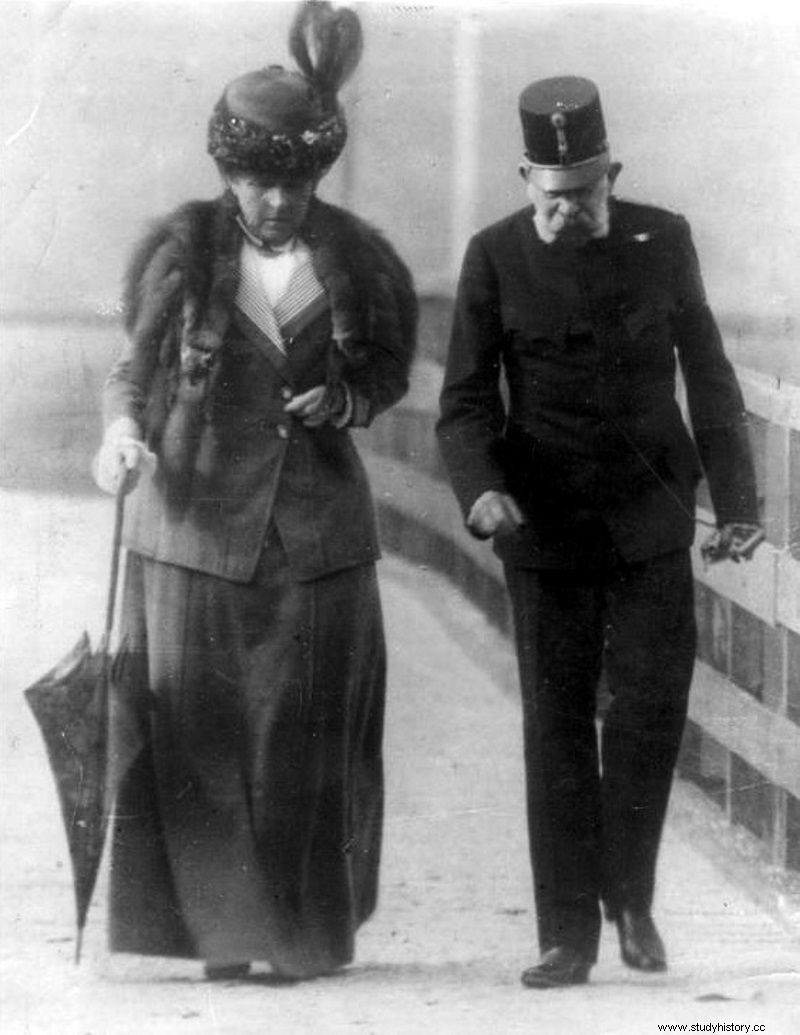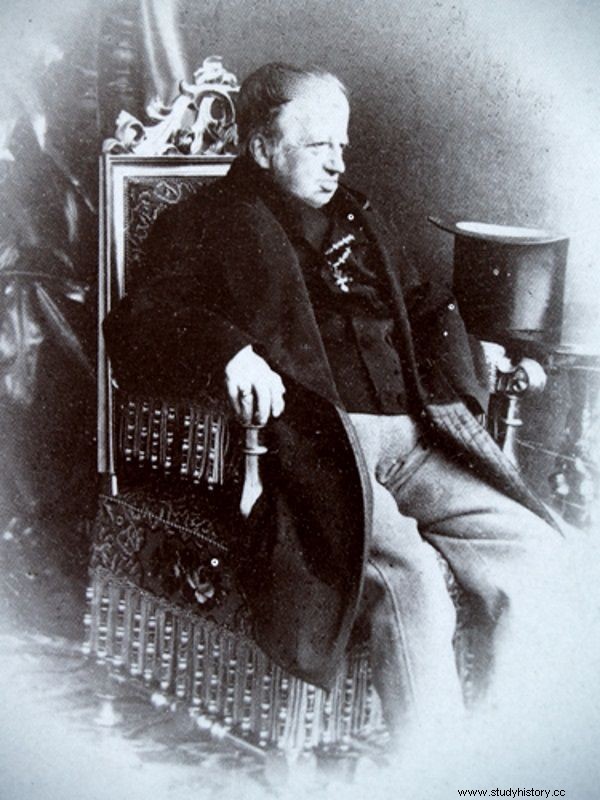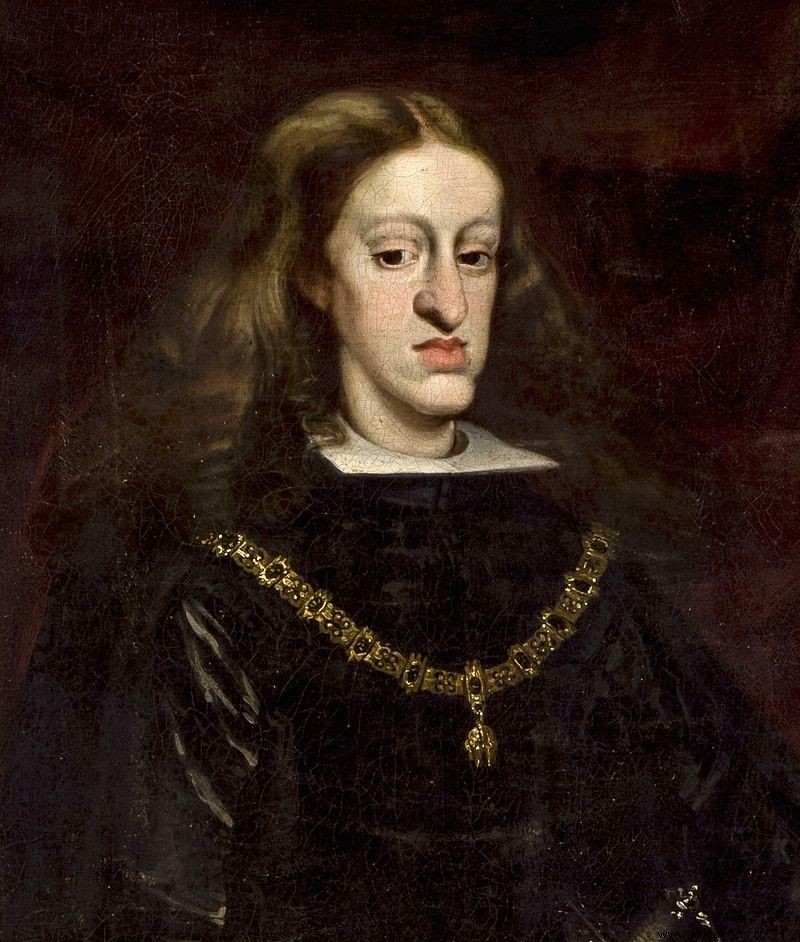Crowned heads have always had a lot on their conscience, but perhaps no dynasty has gone astray as much as the Habsburgs. The sins and sins of these rulers shaking Europe to this day place them at the forefront of degenerate aristocratic families. What were they doing?
Apparently, the best way to go out with the family is in the pictures - but in the case of this mighty dynasty, even a talented painter, creating a more than flattering picture, would not save the situation. Deformed by genetic diseases, marrying their cousins and nieces, cheating, murdering and retreating from nothing, the Habsburgs had truly unclean consciences. Their shameful secrets could be shared by many aristocratic families, and the sins they committed disqualified them in queue for salvation . Interestingly, some of them didn't even try to hide…
Death on request (and without)
The road to the top is littered with dead bodies. The Habsburgs were well aware of this and, without blinking an eye, handed down death sentences on their political enemies who dared to thwart their ranks. The victims of their unbridled thirst for power were, among others, the Polish queen, Bona Sforza.
Over the decades, the ruler has consistently pursued her own political intentions, without paying attention to her powerful neighbor. Hungry for revenge, Philip II Habsburg - without hiding it at all - gave her a death sentence, and sent her friend and adviser, Jan Wawrzyniec Pappacoda, to carry it out. The murderer then wrote to one of the royal ministers that: "By the death of the Polish queen I fulfilled the promise made to the court of the king of His Catholic Love" .

Queen Bona was poisoned, and the perpetrator's hair did not fall off for this murder. Everything commissioned by the Habsburgs.
In the crossfire of brutal games of thrones, "their own" often died, such as Albrecht I Habsburg, who was murdered by his own nephew, Jan Parricida in May 1308 on the Reuss River. The eighteen-year-old prince, a tombstone after Rudolf II, dreamed of taking power in Bohemia or at least in the family estates of his mother, Agnieszka Przemyślidka. Both, however, his uncle refused him both, sparing no harsh words on the young man. There could be only one punishment for this "insult":death.
Habsburg impetuosity sometimes also took a different form. This was the case with Archduke Rudolf Habsburg. On January 30, 1889, he was found dead in his chamber at the Mayerling hunting lodge. Officially, the cause of death was a stroke (in the public version) or a heart attack (according to information sent to the crowned heads). In fact, the heir to the Austrian throne committed suicide by previously killing his young lover, Maria Vetsera .
In 1956, Alfred Wysocki proposed an alternative explanation for the mysterious death of the beloved son of Empress Sisi:“most likely he was beaten at night by a forester in Heiligenkreuz, having found him with his wife. Baroness Vetsera committed suicide when Rudolph's body was brought to her. " Another version says that the archduke murdered the madrassa out of affect - after an argument that allegedly occurred just before the tragedy. It is possible that third parties also had their fingers in it. What really happened in Mayerling? We'll probably never know that…
There is no doubt, however, that the train to kill was family-owned by the Habsburgs. If they did not target political opponents or lovers, they would turn against… animals. Two rulers from this dynasty showed particular cruelty. Leopold I reportedly ordered the trapped foxes to be beaten to death; it was rumored that he used dwarfs for this ungrateful job . In turn, Franz Ferdinand loved hunting above all, during which he killed whatever he could. The boldest estimate says that he killed over 250,000 various animals in total, and his personal record was over 2,000 victims in one day! Sam died from a shot by another "hunter" - apparently karma is returning ...
Gusts of heart and unsatisfied desires
Who, having married a woman described as the most beautiful in history, decides to cheat? Emperor Franz Joseph I, the unfaithful husband of Elizabeth of Bavaria. Interestingly, at first he had a sincere (and not fully reciprocated) love for his wife, but the woman focused on her appearance did not pay attention to her partner's needs, and sex was not very important to her.
It is therefore not surprising that the amorous monarch sought consolation in the arms of numerous lovers. The last one, actress Katarzyna Schratt, was suggested by Sisi herself. She decided that since a husband must have an object of sighs, at least she would try to influence his choice.
The heart was also guided by the young Maria Teresa, who forced her father to agree to marry her childhood friend, Franciszek Stefan Lotaryński. The wedding took place on February 12, 1736. A woman in love affectionately called her partner "Mouse" (she later changed this affectionate nickname to " mon cher Old"). However, the matrimonial situation of the ruler was rather bleak. As in the book points out "C of the Habsburgs' Sigrid-Maria Größing :
She could not count on her husband's faithfulness, heard many spicy stories, and the number of ladies Franciszek Stefan made her happy made her sleepless . She could not prevent "Myszka" from purchasing a palace on Wallnerstrasse with discreet entrances, thanks to which the ladies entering and exiting there were not seen and it was impossible to recognize them.

Franciszek Józef and Katharina Schratt. The films with Romy Schneider make us believe in the eternal love of the emperor and Sisi, while his wife herself suggested another woman to him (photo:public domain)
Maria Teresa recaptured her husband's escapades by terrorizing the inhabitants of Vienna. She established a special commission that looked under the quilts and skirts of citizens and reported on their immoral behavior. The monarchs also targeted prostitutes, who, in her opinion, were guilty of a general decline in morals. She decided to throw them out of the capital and settle on the fringes of the Habsburg empire. Meanwhile, she herself had to come to terms with Franciszek's outrageous urge, close her eyes and think about Austria . Ultimately, her main task was to bring into the world little heirs to the throne. She filled them with interest - she bore the emperor as many as 16 children!
The Habsburg dynastic policy was aptly summed up by Norman Davies. According to him, the members of the family "knew very well that the amazing change of fate that took place at the beginning of the 16th century was largely due to their fertility." But then how did it happen that the mighty and rabbit-breeding lineage of the Spanish lineage just died out at some point?
And this is a flaw, or the tragic consequences of incest
Here we come to the most serious Habsburg offense - endogamy. This practice, popular among European aristocrats, boiled down to the consistent marriage and procreation of children in a strictly closed (and inevitably very limited) group of people. All this so as not to thin the blue blood unnecessarily through relationships with less noble partners .
Probably no European family has followed the tradition of inbreeding with the same commitment as the Habsburgs. Incestuous relationships were the order of the day with them. Well, they did not yet have our knowledge of the tragic consequences of such relationships. On the other hand, however, they might have noticed that something was up, when successive children were born with disabilities and died one by one before they even reached their teens .

Ferdinand I of Habsburg in the last years of his life. With the advent of the era of photography, hiding the flaws in portraits became more difficult (photo:public domain)
As calculated by geneticists at the University of Santiago de Compostela, the inbred reproductive rate among the monarchs of the Spanish Habsburg lineage increased from 0.025 to 0.254 in just two centuries (from the reign of Philip I the Beautiful to the end of the dynasty). What does it mean? Well out of 11 marriages concluded at that time up to 9 occurred between close relatives!
The effects were visible at first glance, especially in the form of the famous Habsburg lip. Excessive extension of the jaw forward was a common genetic defect among children with incestuous relationships - unfortunately, it was not the most serious disease. But for some members of this laid-back family, the consequences of the family policy went much further.
Perhaps the last Habsburg on the Spanish throne - Charles II - turned out to be the greatest victim of excessive care for the purity of blood. He was severely physically handicapped: could not eat, drink or speak clearly, he quickly lost his hair and teeth (and at the end of his life - also hearing), and in addition he could not have children. Worse, his mental health also left a lot to be desired. From an early age he showed a developmental delay and never received formal education.

Charles II of Habsburg, in whom undesirable genetic traits accumulated. His appearance was certainly softened by the portraitist anyway (photo:public domain).
Ferdinand I, son of Emperor Francis II and his cousin Maria Teresa of Bourbon, received a similar set of genetic conditions, including hydrocephalus, rickets, and epilepsy on top of that. This is what characterizes his situation Sigrid-Maria Größing in the book " Empress Habsburgs ” :
It was difficult to find a suitable wife for Ferdinand because the doctors denied the young man any merits (...). Ferdynand and Maria Anna [Savoy - ed. ed.], they met for the first time in Wiener Neustadt. Nowhere is it written what the fiancée felt when she saw the pitiful form of her fiancée. But it doesn't take much fantasy to imagine how terrified a young woman must have been at the sight of a frail man with an enormous head that he could barely hold around his neck , and with whom she was to spend her life.
In the claws of madness
However, the unbeatable effects of endogamy were not always visible immediately. It happened that the genetic Molotov cocktail only exploded in the form of mental illness. This was the case of Joanna Szalona, who came from the Trastamar dynasty, but passed on her flawed DNA to the Habsburgs through her marriage to Philip II the Beautiful. In the family tree of the unfortunate Charles II it appears 14 times!

Joanna Crazy (photo:public domain)
This unbalanced ruler, struggling with mood swings and tantrums on a daily basis, reached the peak of madness after her husband's death. Mourning, she refused to believe that Philip, in his lifetime not very loyal and prone to betrayal, had passed away forever. He made his body treat as if he was still breathing. The servants had to change him, carry him in a litter and put him in Joanna's bed, even though the corpse was in a state of advanced decay . She agreed to the funeral only when she heard that the burial would hasten the resurrection of the dead king.
At the point of the funeral, Joan's son, Emperor Charles V, was also fixed, although he did not mean his father's remains, but ... his own. Desperate that he would not be able to see the ceremony of his own burial, he decided to anticipate the facts a bit and organized it during his lifetime. He lay shrouded on a catafalque for several hours while the monks prayed for him. He paid for the bizarre party with a fever. He didn't really die until six months later.
There are many similar cases in the turbulent history of the Habsburg family. It should be remembered, however, that not only they had serial betrayals, incest, strange fetishes and crimes committed in cold blood on their conscience. This applied to a greater or lesser extent to all great dynasties, including our Jagiellonian dynasties. Well, it has been known for a long time that power corrupts. But to do that?
Bibliography:
- Gonzalo Alvarez, Francisco C. Ceballos, Celsa Quinteiro, The Role of Inbreeding in the Extinction of a European Royal Dynasty , PLOS One (access:21/01/2019).
- Hellmut Andics, Habsburg Women , Ossolineum 1991.
- Johan Brouwer, Joanna Crazy. A tragic life in a troubled time , PIW 1991.
- Norman Davies, Roger Moorhouse, Microcosm. A portrait of a Central European city , Mark 2003.
- Stanisław Grodziski, Habsburgs. History of the dynasty , Ossolineum 1998.
- Sigrid-Maria Größing, Empress of the Habsburgs , Lira 2019 publishing house.
- Brigitte Hamann, Empress Elizabeth , PIW 1999.
- Kamil Janicki, Ladies of the golden age , Horizon 2014 sign.
- Andrew Wheatcroft, Habsburgs , Wydawnictwo Literackie 2000.
